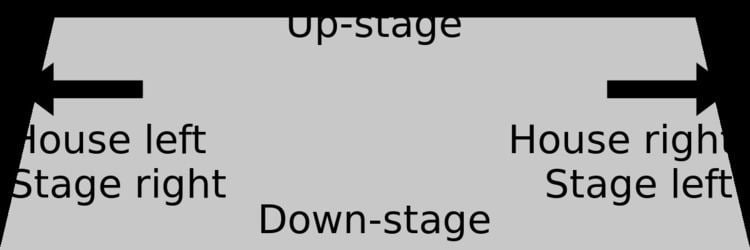 | ||
In theatre, blocking is the precise staging of actors in order to facilitate the performance of a play, ballet, film or opera.
Contents
Etymology
Both "blocking" and "block" were applied to stage and theater from as early as 1961. The term derives from the practice of 19th-century theatre directors such as Sir W. S. Gilbert who worked out the staging of a scene on a miniature stage using blocks to represent each of the actors. (Gilbert's practice is depicted in Mike Leigh's 1999 film Topsy-Turvy.)
Blocking in theater and film
In contemporary theater, the director usually determines blocking during rehearsal, telling actors where they should move for the proper dramatic effect, ensure sight lines for the audience and work with the lighting design of the scene.
Each scene in a play is usually "blocked" as a unit, after which the director will move on to the next scene. The positioning of actors on stage in one scene will usually affect the possibilities for subsequent positioning unless the stage is cleared between scenes.
During the blocking rehearsal, the assistant director, stage manager or director take notes about where actors are positioned and their movements on stage. It is especially important for the stage manager to note the actors' positions, as a director is not usually present for each performance, and it becomes the stage manager's job to ensure that actors follow the assigned blocking from night to night.
In film, the term is sometimes used to speak of the arrangement of actors in the frame. In this context, there is also a need to consider the movement of the camera as part of the blocking process (see Cinematography).
Stage directions
The stage itself has been given named areas to facilitate blocking.
